Hi Everyone!
I just published the latest volume of the Table of Animals today! This is part Three, focusing on the Lophotrochozoa. This is a group of invertebrate animals that contains the worms (Annelids), Brachiopods, Platyhelminthes and Bryozoa. Each of these groups has never been explored systematizally within Homeopathy to date, and I am excited to bring this
The Mollusks are also included in the Lophotrochozoa. However the Homeopathic literature on the Mollusks is far more developed, requiring it’s own volume.
This work follows on my other works, The Table of Animals, and the Porifera, Cnidaria and Ctenophora. However, based on feedback I included an introduction to the Table of Animals as a whole in the book.
There will be a paperback version released, combining this volume with the future volume on Mollusks, released sometime next year. I am hopeful to release the ebook on mollusks when editing is done, sometime in January or February.
I look forward to hearing what you all think of it!
Take Care, Merry Christmas and Happy Holidays!
Turtles are generally a very poorly proven group of vertebrates. We have only 5 proven members of this species, all from the Cryptodira. Any Members of the Pleurodira would be excellent candidates for proving. 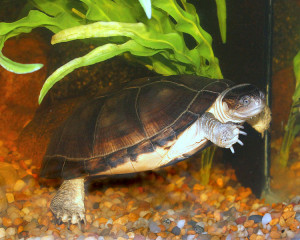 Some interesting candidates would be the African helmeted turtle (Pelomedusa subrufa) a species which has been observed engaging in mutuallist cleansing of parasites on warthogs and rhinoceros[i] shown here[ii] . Also interesting would be the mata mata turtle (Chelus fimbriata), with it’s exquisite body shape, used to camouflage itself amoung rocks and streams in South America.
Some interesting candidates would be the African helmeted turtle (Pelomedusa subrufa) a species which has been observed engaging in mutuallist cleansing of parasites on warthogs and rhinoceros[i] shown here[ii] . Also interesting would be the mata mata turtle (Chelus fimbriata), with it’s exquisite body shape, used to camouflage itself amoung rocks and streams in South America.
In terms of the cryptodira, a multitude of fascinating species are available. Two separate, but very similar, species of giant Tortoises are extant, the Galapagos giant tortoise (Chelonoidis nigra) and the Aldabra giant tortoise (Aldabrachchelys gigantea). Both can be over 1m long, and upto 250 kg. Geographic isolation on islands. Both of these species are remarkably long lived, with some individual Aldabra giant Tortoises being recorded as living up 184 years.
Other intriguing species for proving would be the pig nosed turtle (Carettochelys insculpta) the only freshwater turtle with flippers instead of legs, and with a remarkle nose resembling that of a pig. Also interesting would be the eastern long necked turtle (Chelodina longicolis) which is remarkable for it’s long, almost snake like neck and it’s ability to secrete a foul smelling substance upto three feet when threatened.
[i] LightMatter. Online Image accessed November 26th 2017. https://en.wikipedia.org/wiki/File:Galapagos_dominance_display.jpg
[i] Owen, J. Turtles groom warthog in never-before-seen behavior. Oct 8 2015. National Geograhic. Online document accessed November 26th 2017. https://news.nationalgeographic.com/2015/10/151008-turtles-warthogs-africa-animals-science/
[ii] Photo by Greg Hume. Accessed November 26th 2017. https://en.wikipedia.org/wiki/File:Helmeted_turtle_25.JPG
Image Source: https://en.wikipedia.org/wiki/File:Helmeted_turtle_25.JPG Photo by Greg Hume.
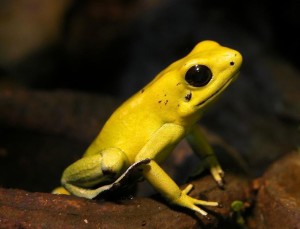 he Chinese softshell turtle, for my the Turtle chapter of the Table of Animals. My existing published work on the subject can be found here.
he Chinese softshell turtle, for my the Turtle chapter of the Table of Animals. My existing published work on the subject can be found here.
One of my earlier discoveries came to light today during a transcription of a new trituration
Hi Everyone. Homeopathy is undergoing a massive evolution in many aspects in the contemporary era.
Teaching styles of Homeopathy are part of this evolution. Immersions are a new and incredibly effective way to learn materia medica. Explaining them is difficult via text, so I made a video to explain them, with a demonstration!
I will be teaching a course on My Table of Animals using immersion methods in Toronto on Nov 4-5th 2017.. You can register by clicking here. I hope to see you all there!
Hi Everyone. So I decided to write a blog post about a recent aspect of my work. I’ve started treating a great deal of chronic infectious disease, finding it as an underlying condition for a great deal of the chronic health problems afflicting our population.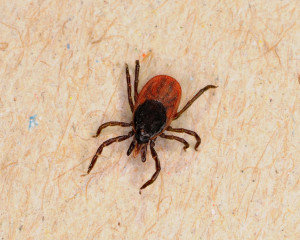
From my experience, at least in the unhealthy populations that seek me out for Naturopathic healthcare. It is present almost universally in people with autoimmune disorders, ad at very high levels in patients with mental illness, cancer, fibromyalgia, chronic fatigue, and other serious disorders.
The idea of chronic infections causing derangement of health is one that dates back to Hahnemann. The idea of Miasms, chronic infections which predispose an individual towards ill health was proposed in his great work, the Chronic diseases, and formed an integral part of Homeopathy, as it came to develop over the next two centuries.
Naturopathic medicine has known of the concepts of miasm since it’s inceptionm but this concept was submerged through the great mid century lessening of holistic medicine of all kinds. With the dawning of awareness of infections such as HIV and Lyme, it has been redisovered.
For whatever reason, humans have the capacity to retain infections within themselves long term, without manifesting signs of infection, such as fever, swelling and pain. There are long term consequences for this, with dysfunction in almost any system being maintained or caused by these infections.
Previous understandings of chronic infections have been limited by the poor nature of testing, its unrelaibility ( notorious in the case of Lyme and coinfections) and the costs of testing multiple pathogens. Recently physical exams have become available, which simply diagnosis considerably, enabling it to be preformed in office, and for no cost outside of normal visit fees. While a work in progress, these new methods allow for quick screening of everyone for these conditions.
Once diagnosed, Therapy consists of three main modalities:
- Homeopathic Nosodes- Daily administration of a nosode of the chronic infection in question aids the body in mounting an immune response to it, and fighting it off
- Hydrotherapy– One of our most powerful modalities, hydrotherapy strengthens the body’s immune response. I have not yet seen someone who has been able to clear an infection completely without hydrotherapy. It is preformed weekly, in most cases, and takes roughly one hour
- Herbal therapy- Herbs to strengthen the bodies immune response and dissolve biofilms are given to aid the body in it’s response and shorten the duration of therapy
This therapy is not easy. Signs of systematic immune responses, such as fever, muscle pain, and so forth will occur, and sometimes can be quite dramatic. Most people take 3-6 months to clear their infections, though this can take longer in some cases. But the cost is reasonable, and at the end of therapy, patients report being in better health, with many of their chronic issues resolves, or at least considerably lessened and more ameniable to normal Naturopathic treatment.
Image Credit: https://commons.wikimedia.org/wiki/File:IxodesRicinus2048.jpg
Hi Everyone. I just published my first paperback book!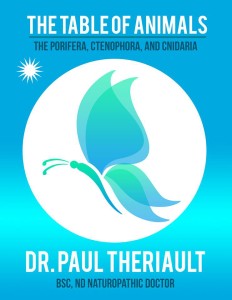
This book was a compilation of my previous two e-books, which focused on the Porifera, and the Cnidaria and Ctenophora respectively.
You can buy it at this website.
I had planned to release my earlier written book “A New Era: Homeopathy and the Human Spirit” first, but unfortunately that book is still being edited. I am hopeful it will be available for purchase this fall however.
I look forward to any feedback you all have on the book. Please comment and review it!
Take care of yourselves.

Amphibians are one of the least proved classes of verberates. This is quite surprising considering the wide variety of psychoactive and bioactive peptides found in this group.
In terms of larger scale group Caecilians remain completely unproven, with no members of this group either potentised or proven. Any caecilians would be a welcome addition to the material medica. Particularily interesting would be a species of Atretochoana, a Brazilian species which is the largest tetropod that lacks lungs.
Relatively few species of Caudata have been proven as well. Interesting candidates would be the Olm, Proteus anguinus, a blind species of colorless cave dwelling salamanders found in southern Europe would be an interesting candidate. The Pleurodeles and Tylototriton genera of salamanders are remarkable in their possession of sharp ribs which can be pushed into predators and used to inject venom. This is a completely unique method of venom delivery and would make them fascinating provings. The world’s largest salamander, the Japanese giant, Andrias japonicas, would also make an excellent candidate.
Frogs and toads have a greater number of proved specimens, but a number of fascinating species with great proving potential exist. The hallucinogenic frog, Bufo alvaris, also presents an interesting potential for Homeopathic use. More thorough proving would be excellent. Corroboree frogs (Pseudophryne species) are unique in producing their own venom, rather than deriving it from external sources. Perhaps the greatest medicinal potential lies in the Poison dart frogs of South America. Used by indigenous groups to literally poison darts and paralyze prey, the skin secretions of these frogs have powerful medicinal properties that could be very useful potentised. Two members of this group, Dendrobates auratus and Dendrobates tinctorius have been potentised already, and simply await thorough provings. Phyllobates terribilis is also an excellent candidate, with a toxic profile so distinct as to be included in this material medica. I would ask any pharmacy making remedies from these frogs to use wild specimen, capturing the full spectrum of toxicity these frogs posess in the wild. Captive specimens generally do not display toxins, and likely would not produce remedies with as profound a therapeutic effect. Pharmacies must track the source of their remedies, maintain this information, and share it when they share remedies with one another.
Image Credit: https://en.wikipedia.org/wiki/File:Schrecklicherpfeilgiftfrosch-01.jpg
Hi Everyone!
I have just published the next volume of my work, the Table of Animals. It is on the Cnidarians and the Ctenophores. You can find it, and a sample of this work, here.
As well, I have made a new video describing the Table of Animals. I hope you all enjoy it.
I will be publishing the Sponges, and the Cnidarians and Ctenophores together as a paperback in the next few weeks as well. I also anticipate publishing the Lophotrochozoa and the Mollusks soon! I will keep you all informed via this block, Facebook and Twitter.
I hope you all enjoy this.I would love to hear any feedback you may have!
Take care!
Hi Everyone. Happy Naturopathic medicine Week to everyone! Just as I did last year I have decided to summarize the research I have posted over this year.
To begin with, let us examine this article. It is a general introduction to Naturopathic medicine summarizing the general trends of the profession. I often find that that article pairs well with the video below in explaining who we are and why Naturopathic Doctors exist.
Now in terms of research, we can look at a number of trials of the medicine in general. Examining the research on each individual intervention in general would be beyond the scope of this blog post. I would refer my readers to my page on Homeopathy and other blog posts here, here and here for information on the specific modality of Homeopathy.
One trial of whole Naturopathic medicine for lower back pain, found here, found significantly lower back pain, spinal flexion, BMI, quality of life and increased weight loss for patients receiving Naturopathic care when compared to the normal standard of care for lower back pain. Furthermore, an economic analysis, shown here, found that Naturopathic intervention in the above trial resulted in savings of $1212 to society and 1096 per individual.
A second Trial, shown here, shows Naturopathic medical treatment resulting in changes in blood chemistry that equate to a 3.07% reduced 10 year risk of a severe cardiovascular event and a 16.9% reduced frequency of metabolic syndrome. Furthermore an economic analysis, shown here, of the above trial showed a reduction of $1138 in costs to employers and $1187 to society. The results were so strong that the Journal of the Canadian Medical Association published an editorial that endorsed the idea of delegation of some aspects of cardiovascular care to Naturopathic Doctors. You can find this editorial here.
Turning to anxiety, a clinical trial was also conducted showing a decrease of 56.5% in Beck Anxiety Inventory scores in Naturopathic patients compared to a reduction of 30.5% in patient who received Psychotherapy in patients with anxiety over twelve weeks. A second trial, found here, examined the real world improvement of anxiety in a Naturopathic clinic. That trial found a decrease of 58.6% for those with a score greater than 10 on the Patient Health Questionaire Depression screen and 50% for patients who score above 10 in The Generalized Anxiety Disorder 7 item scale.
Diabetes has also been examined in this way. In one trial, shown here, showed 65% of patients achieving a favorable outcome with 19% being able to stop antidiabetic medications completely. Furthermore, this trial clearly linked this to the Naturopathic intervention, with a 0.4% reduction in HA1C shown with with poor compliance to the interventions, 1.1% with moderate compliance and 1.7% with excellent compliance. For those who do not know, HA1c is a measure of glycated hemoglobin, a long term measure of blood sugar levels. Higher levels indicated higher chronic blood sugar. A second trial, shown here, in which not only did patient compliance and self care improve significantly, but HA1c also decrease relative to conventional care only at 6 and 12 months, although non-significantly.
The issue of Cost is a vast issue in Healthcare today, with both Canadian and American Healthcare systems struggling over an ever increasing cost driven mainly by aging and an accompanying burden of chronic disease. Naturopathic care trials are increasing tackling this issue, showing as we have seen the cost effectiveness of our interventions. More work must and will be done in this area, but this trend in research is summarized below in a video by Michelle Simon.
Secondly, one brand of criticism for our profession is in the deficiency of our education.Naturopathic Medical education is regulated strictly by the Council on Naturopathic Medical Education (CNME). Standards are maintained to a high degree, and only nine programs are either accredited or candidates. Usually we are compared very 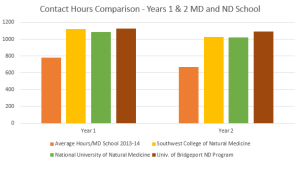 unfavorably with allopathic medical educations. However the Association of Accredited Naturopathic Medical Colleges created this webpage, in which the curricula are compared. Right we can see a graph comparing the relative hours within the education of each profession. The BCNA also composed a more detailed analysis of the relative hours within each curriculum, which can be found here. In terms of a personal experiences, that of one person who went to both Allopathic and Naturopathic Medical school. She found, in this article, the curricula compared well with one another. The one difference one can legitimately criticize is the institution of the allopathic residency. Indeed Naturopathic medical education lacks many residencies. However considering the extreme cost of such residencies, which are subsidized by the government to the approximate amount of $112 642 USD per resident, according to the following article. Naturopathic Doctors would indeed enjoy access to residencies, but unfortunately, without equal access to government funding and subsidies, this looks to be difficult due to cost.
unfavorably with allopathic medical educations. However the Association of Accredited Naturopathic Medical Colleges created this webpage, in which the curricula are compared. Right we can see a graph comparing the relative hours within the education of each profession. The BCNA also composed a more detailed analysis of the relative hours within each curriculum, which can be found here. In terms of a personal experiences, that of one person who went to both Allopathic and Naturopathic Medical school. She found, in this article, the curricula compared well with one another. The one difference one can legitimately criticize is the institution of the allopathic residency. Indeed Naturopathic medical education lacks many residencies. However considering the extreme cost of such residencies, which are subsidized by the government to the approximate amount of $112 642 USD per resident, according to the following article. Naturopathic Doctors would indeed enjoy access to residencies, but unfortunately, without equal access to government funding and subsidies, this looks to be difficult due to cost.
Naturopathic medicine has experienced in the last few decades a great deal of improvement in terms of our acceptance by governments and other medical professions. One article, posted here, predicts the idea of integration between conventional and Naturopathic medicine as one of the trends in the future. The popular term for this is integrative medicine, and indeed Allopathic physicians have themselves began adopting some Naturopathic practices and modalities, a phenomenon in which Naturopathic Doctors have played a leading role (see this article).
Now, I am glad to see Naturopathic modalities gain wider traction. However I do hope that this diffusion of our philosophies is accompanied by greater scope of Practice for Naturopathic Doctors and with greater access to research funding and the instruments of public health policy. My vision of Naturopathic medicine is like that which occurs in India. The Indian medical system does not discriminate between professions as North American systems do. All Professions, such as Naturopathic Medicine, Allopathic Medicine, Homeopathy, Ayurveda, Sidda, Unani and Yoga are regulated, have Doctoral level training and possess institutions, Hospitals and in patient facilities where they treat patients, and refer when needed. A ministry of these Medical systems, called the Ministry of Ayush, exists and is currently undertaking an amazing program of research and improvement of all medical systems in the country. The following video explores the hospitals of Naturopathic medicine in India, the results they get, and some of the amazing projects undertaken there. It is my goal to see such institutions in all cities across North America.
Happy Naturopathic Medicine week to everyone. Take care of yourselves.
Image Credit. AANMC. https://aanmc.org/wp-content/uploads/2016/03/Contact-hours.png
Hi Everyone!
So as some of you have read, one woman in California recently died during a Naturopathic treatment. This individual was receiving an Intravenous infusion of Curcumin, and from the apparent data, appears to have been anaphylactic in Nature.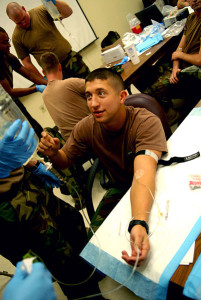
Dr. Paul Anderson, a Seattle Naturopathic Doctor with great expertise in Intravenous therapeutics, has written a short paper on this topic, shown below:
Curcumin Event Notes-Anderson-03-2017-public
Anaphylactic reactions are those which occur when the body is exposed to an allergen and creates a life threatening state of immune activation, frequently resulting in death. It is treated by injection of Epinephrine and Diphenhydramine (benadryl). Even with such treatment, anaphylaxis can still be fatal.
As shown in Dr Paul Anderson’s posting, reactions to IV curcumin (and Naturopathic injection therapies in general) are exceedingly rare. He personally has administered approximately 10 000 doses without any severe adverse reactions. These formulations are sterile, manufactured according to FDA approved procedures, manufactured from FDA cleared product and completely legal for injections. The reaction was not related to the toxicity or dose of the IV preparation in question.
This death will be investigated by the regulatory authorities for Naturopathic Doctors in California. If the Naturopathic Doctor in question is at fault, discipline will be administered, and policies may be changed. However, this unfortunate tragedy must be put into perspective. As shown in this paper, Anaphylactic reactions in medical care are quite common. For instance the rate of anyaphylaxis to penicillin ranges from 0.7-10%, 0.22-1% for radiocontrast media.
More specifically, researchers at the Albert Einstein College of Medicine examined anaphylaxis as a cause of death based on mortality data ( in the United States). From 1999-2010 they identified 2458 deaths. Of these 1446 were due to medication (58.8%), nearly half of these being due to antibiotics alone.
The blowing out of proportion of this single death as a rallying cry for the legal and cultural persecution of Naturopathic Doctors, especially in light of the far far higher numbers of anaphylactic reactions and other adverse outcomes from allopathic care is a glaring example of the Fake News narrative surrounding Naturopathic medicine that I described in a previous blog post.
The most glaring example of this Fake News Narrative is found in the recent Forbes article on the subject. The author brazenly misstates facts on the case ( for instance, IV tumeric does not actually exist), fails to cite relevant published literature supporting the use of IV curcumin (not IV tumeric) and IV Ozone, cites several cases of disciplinary measures against Naturopathic and Integrative Doctors while ignoring the literally tens of thousands of deaths associated with allopathic care, and uses inflammatory and misleading language to paint a picture that is quite far from reality.
In short, this death is a tragedy that is being exploited by the same ideological groups that have constructed a Fake News Narrative against Naturopathic medicine to further their ideological goals. For people who accuse (falsely) Naturopathic Doctors of exploiting the suffering of sick people and selling false hope by curing conditions that conventional care is usually helpless against, this is a particularly hypocritical action.
Error note: I previously listed IV curcumin as FDA approved. I was unaware of the this specific term being a legal term in the United states for the FDA approving a specific drug for specific indications. Curcumin is manufactured under compound drug procedures approved and enforced by the FDA, but the term “FDA approved” does not apply to it. I apologize for the error. I am indeed not hugely familiar with American terminology on the subject.